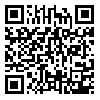Volume 79, Issue 7 (October 2021)
Tehran Univ Med J 2021, 79(7): 499-506 |
Back to browse issues page
Download citation:
BibTeX | RIS | EndNote | Medlars | ProCite | Reference Manager | RefWorks
Send citation to:



BibTeX | RIS | EndNote | Medlars | ProCite | Reference Manager | RefWorks
Send citation to:
Salamat M R, Ebrahimi A, Moslehi M. Evaluation of cumulative kidney activity in pediatric nuclear scan of the bladder using conjugate view method and four different techniques for correcting background radiations. Tehran Univ Med J 2021; 79 (7) :499-506
URL: http://tumj.tums.ac.ir/article-1-11359-en.html
URL: http://tumj.tums.ac.ir/article-1-11359-en.html
1- Department of Medical Physics, School of Medicine, Isfahan University of Medical Sciences, Isfahan, Iran , salamat@med.mui.ac.ir
2- Department of Medical Physics, School of Medicine, Isfahan University of Medical Sciences, Isfahan, Iran
2- Department of Medical Physics, School of Medicine, Isfahan University of Medical Sciences, Isfahan, Iran
Abstract: (1277 Views)
Background: At present, in nuclear medicine to calculate the cumulative activity of various organs, different techniques are being used to correct the background radiations in the conjugate view method. Each of these techniques considers the effect and weight of background radiations to a different extent. These background radiations can cause errors in cumulative activity calculations. The purpose of this study was to evaluate and compare different techniques of correcting background radiations to each other in calculating kidney cumulative activity during the nuclear scan of the bladder in children.
Methods: This study was Cross-sectional and performed for patients who were referred to Isfahan Shahid Chamran Hospital between December 2019 and June 2020. In this study using Foley, 1 mCi of TC-DTPA radio-pharmaceutical that was diluted with normal saline was injected into the patient's bladder, then images recorded by gamma cameras were extracted at 2, 5, 10, and 20 minutes, Finally with ROI drawing around kidney with having vesicoureteral reflux, Cumulative renal activity was calculated with four correcting background radiations techniques such as without correction of background radiation, conventional method, Buijs method, and Kojima method Eventually, the data was Eventually, the data was compared to each other to determine how much weight each of these techniques consider for background radiations.
Methods: This study was Cross-sectional and performed for patients who were referred to Isfahan Shahid Chamran Hospital between December 2019 and June 2020. In this study using Foley, 1 mCi of TC-DTPA radio-pharmaceutical that was diluted with normal saline was injected into the patient's bladder, then images recorded by gamma cameras were extracted at 2, 5, 10, and 20 minutes, Finally with ROI drawing around kidney with having vesicoureteral reflux, Cumulative renal activity was calculated with four correcting background radiations techniques such as without correction of background radiation, conventional method, Buijs method, and Kojima method Eventually, the data was Eventually, the data was compared to each other to determine how much weight each of these techniques consider for background radiations.
|
Results: Cumulative kidney activity after calculation with four correcting background radiations techniques such as without correction of background radiation, conventional method, Buijs method, and Kojima method were 14.970±4.776, 13.544±4.357, 13.885±4.451, 13.879±4.449 mCi.min. respectively After comparing the calculated cumulative activity without correcting the background radiations with the cumulative activity calculated by the three techniques of correcting the background radiations such as the conventional method, Buijs method, and Kojima method, the value (P<0.05) was obtained in all cases, which shows that elimination of background radiations is significantly meaningful in the calculations of cumulative activity in the conjugate method for nuclear exams
Conclusion: after comparing correcting background radiations techniques to each other, it was determined that the conventional method technique considers the effect and weight of background radiations more than the two other techniques such as the Buijs method and Kojima method in cumulative activity calculations. |
Type of Study: Original Article |
Send email to the article author
| Rights and permissions | |
 |
This work is licensed under a Creative Commons Attribution-NonCommercial 4.0 International License. |





